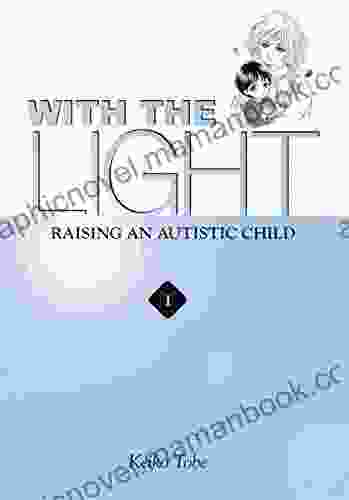Dutch Grammar in Steps: A Comprehensive Guide for English Speakers


Are you ready to embark on a journey to master the intricacies of Dutch grammar? Whether you're a complete beginner or an intermediate learner looking to refine your skills, this comprehensive guide will provide you with a step-by-step approach to understanding the essential aspects of the language. Dive in and discover the secrets of Dutch grammar, unlocking the gateway to fluent communication.
4.6 out of 5
| Language | : | English |
| File size | : | 3875 KB |
| Screen Reader | : | Supported |
| Print length | : | 3535 pages |
| Lending | : | Enabled |
Step 1: The Basics of Dutch Grammar
Let's start with the fundamentals. Dutch grammar shares many similarities with English, making it relatively accessible for English speakers. However, there are a few key differences that you'll need to be aware of.
- Word order: Dutch word order is generally the same as English, with the subject coming before the verb and the object coming after the verb.
- Articles: Dutch nouns require an article, which can be either definite (de) or indefinite (een).
- Nouns: Dutch nouns have three genders: masculine, feminine, and neuter. The gender of a noun determines the form of the article and adjectives that are used with it.
- Verbs: Dutch verbs are conjugated according to the subject, tense, and mood. There are two main verb tenses: present and past.
Step 2: Building Sentences
Now that you know the basics, let's start building sentences. Dutch sentences are typically structured in a subject-verb-object order. However, there are some exceptions to this rule, such as when the sentence begins with an adverb or a prepositional phrase.
For example, here is a simple sentence in Dutch:
De jongen eet een appel.
This sentence translates to "The boy is eating an apple." As you can see, the subject (de jongen) comes before the verb (eet),and the object (een appel) comes after the verb.
Step 3: Mastering Verb Conjugations
Verb conjugations are essential for expressing tense and mood in Dutch. There are two main verb tenses: present and past. The present tense is used to describe actions that are happening now or that are habitual. The past tense is used to describe actions that happened in the past.
Here is a table of the present tense conjugations for the verb "eten" (to eat):
| Subject | Conjugation | |---|---| | ik | eet | | jij | eet | | hij/zij/het | eet | | wij | eten | | jullie | eten | | zij | eten |
As you can see, the conjugation of the verb changes depending on the subject. For example, "ik eet" means "I eat," while "hij/zij/het eet" means "he/she/it eats."
Step 4: Exploring Different Sentence Types
Dutch sentences can be classified into different types, depending on their structure and purpose. The most common sentence types are:
- Declarative sentences: These sentences make a statement or convey information. They typically end with a period.
- Interrogative sentences: These sentences ask a question. They typically end with a question mark.
- Imperative sentences: These sentences give a command or request. They typically end with a period.
- Exclamatory sentences: These sentences express strong emotion. They typically end with an exclamation mark.
Step 5: Advancing Your Vocabulary
Expanding your vocabulary is crucial for improving your Dutch communication skills. There are a few different ways to do this:
- Read Dutch books, articles, and websites: Reading is a great way to expose yourself to new words and phrases.
- Watch Dutch movies and TV shows: Listening to Dutch will help you to improve your listening comprehension and learn new vocabulary.
- Use a Dutch dictionary or online translator: Look up words that you don't know and add them to your vocabulary.
Mastering Dutch grammar is a journey that requires patience and practice. By following the steps outlined in this guide, you will lay a solid foundation for your Dutch language skills. Remember to practice regularly, immerse yourself in the language, and don't be afraid to make mistakes. With dedication and perseverance, you will become proficient in Dutch grammar and unlock the full potential of your communication abilities.
Embark on this exciting journey today and discover the beauty and richness of the Dutch language!
4.6 out of 5
| Language | : | English |
| File size | : | 3875 KB |
| Screen Reader | : | Supported |
| Print length | : | 3535 pages |
| Lending | : | Enabled |
Do you want to contribute by writing guest posts on this blog?
Please contact us and send us a resume of previous articles that you have written.
 Top Book
Top Book Novel
Novel Fiction
Fiction Nonfiction
Nonfiction Literature
Literature Paperback
Paperback Hardcover
Hardcover E-book
E-book Audiobook
Audiobook Bestseller
Bestseller Classic
Classic Mystery
Mystery Thriller
Thriller Romance
Romance Fantasy
Fantasy Science Fiction
Science Fiction Biography
Biography Memoir
Memoir Autobiography
Autobiography Poetry
Poetry Drama
Drama Historical Fiction
Historical Fiction Self-help
Self-help Young Adult
Young Adult Childrens Books
Childrens Books Graphic Novel
Graphic Novel Anthology
Anthology Series
Series Encyclopedia
Encyclopedia Reference
Reference Guidebook
Guidebook Textbook
Textbook Workbook
Workbook Journal
Journal Diary
Diary Manuscript
Manuscript Folio
Folio Pulp Fiction
Pulp Fiction Short Stories
Short Stories Fairy Tales
Fairy Tales Fables
Fables Mythology
Mythology Philosophy
Philosophy Religion
Religion Spirituality
Spirituality Essays
Essays Critique
Critique Commentary
Commentary Glossary
Glossary Bibliography
Bibliography Index
Index Table of Contents
Table of Contents Preface
Preface Introduction
Introduction Foreword
Foreword Afterword
Afterword Appendices
Appendices Annotations
Annotations Footnotes
Footnotes Epilogue
Epilogue Prologue
Prologue Paula Darwish
Paula Darwish Andrew Baltzegar
Andrew Baltzegar Peter Coleman
Peter Coleman Glen Buckingham
Glen Buckingham Greg Sushinsky
Greg Sushinsky Julie Littlechild
Julie Littlechild Brooks Crittenton
Brooks Crittenton Heather Hayden
Heather Hayden Boyd Craven Iii
Boyd Craven Iii Leslie S Klinger
Leslie S Klinger Quercus Poetry
Quercus Poetry Jack Heath
Jack Heath Gay Talese
Gay Talese Peter G Northouse
Peter G Northouse Jean Oram
Jean Oram Kate Gable
Kate Gable Andrew Lang
Andrew Lang Ross Levin
Ross Levin Juby Aleyas Koll
Juby Aleyas Koll Zeba Ali
Zeba Ali
Light bulbAdvertise smarter! Our strategic ad space ensures maximum exposure. Reserve your spot today!
 W. Somerset MaughamFollow ·4.6k
W. Somerset MaughamFollow ·4.6k Austin FordFollow ·15.8k
Austin FordFollow ·15.8k Federico García LorcaFollow ·19.9k
Federico García LorcaFollow ·19.9k Bill GrantFollow ·10.6k
Bill GrantFollow ·10.6k Arthur MasonFollow ·4.6k
Arthur MasonFollow ·4.6k Dan BellFollow ·10.5k
Dan BellFollow ·10.5k Trevor BellFollow ·3.1k
Trevor BellFollow ·3.1k Roald DahlFollow ·19.7k
Roald DahlFollow ·19.7k

 Rex Hayes
Rex HayesWorld of Dead Volume Issue: An In-Depth Analysis
The World of Dead volume issue...

 Nathan Reed
Nathan ReedHard Lessons Learned from ERP Rollouts: A Hivemind...
Enterprise...

 Fernando Bell
Fernando BellWith the Light, Vol. 1: Illuminating the Extraordinary...
The advent of parenthood is a...

 Wesley Reed
Wesley ReedNo Helping Hand: True Story of Deadly Waves
In December 2004,...

 Ruben Cox
Ruben CoxIntroduction to Electrodynamics by David Griffiths: A...
to Electrodynamics by...
4.6 out of 5
| Language | : | English |
| File size | : | 3875 KB |
| Screen Reader | : | Supported |
| Print length | : | 3535 pages |
| Lending | : | Enabled |











